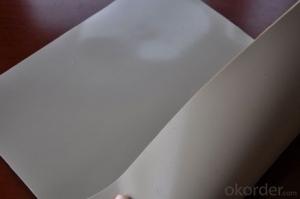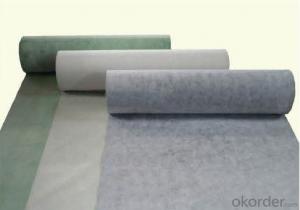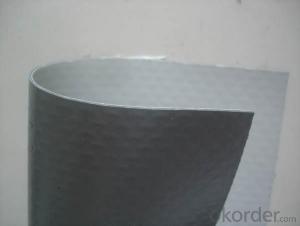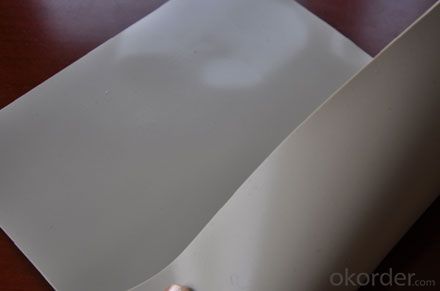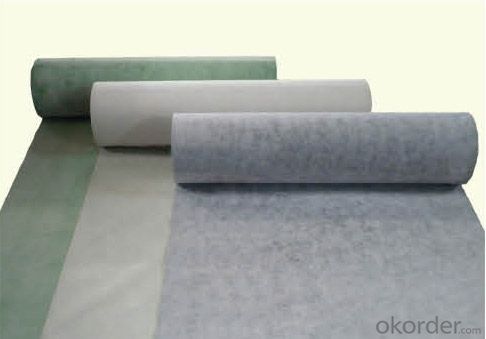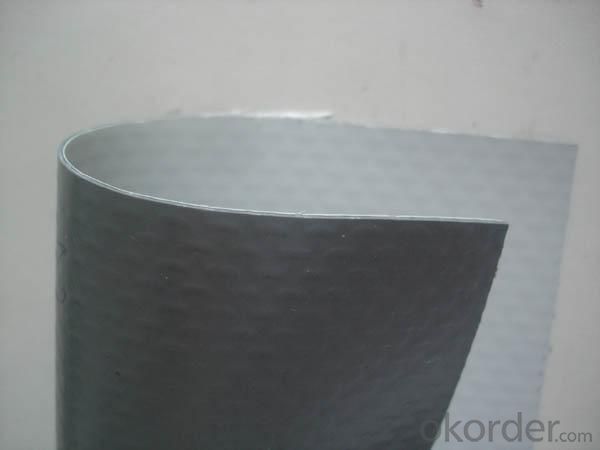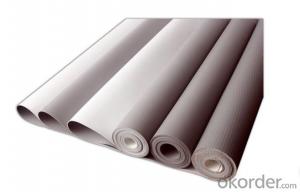Polyvinyl Chloride Plastic Waterproof Membrane
- Loading Port:
- China main port
- Payment Terms:
- TT OR LC
- Min Order Qty:
- 5000 m²
- Supply Capability:
- 100000 m²/month
OKorder Service Pledge
OKorder Financial Service
You Might Also Like
Specification of PVC Waterproofing Membrane
Length | 20m/roll or customized |
Width | 2.05m |
Thickness | 1.2mm; 1.5mm; 2.0mm |
Type | Homogeneous, Reinforced, Fabric back |
If Exposed | Exposed and Non-exposed |
Color | White, Grey or customized |
Introduction of PVC Waterproofing Membrane
Polyvinyl chloride the pvc waterproofing plastic membrane is a kind of excellent performance of polymer waterproof material,PVC resin as the main raw material,add all kinds of special additive and anti-aging composition,the use of advanced equipment and advanced technology extrusion rolling is made.The product has the tensile strength and elongation high shrinkage of small,low temperature soft good,long life and other advantages, the products wide 1.2m to 3.0m, the thickness of 0.8-2.0 mm(special specifications can be customized),stable performance,reliable quality,construction is convenient.
Application Scope
The products are widely used in all kinds of civil construction,subway,tunnel,water conservancy,landfill site,chemical industry,metallurgy and other areas of waterproof seepage control,corrosion engineering.
Product Category
Single composite PVC waterproof materials
Double composite PVC waterproof board
Seperate PVC waterproof board
Some sticky type PVC waterproof materials
FAQ of PVC Waterproofing Membrane
a.Can we get some samples before place order?
Answer: We can send the free samples to you by freight collect.
b.How many years can your PVC membrane guarantee?
Answer: We will guarantee the quality for 5 years at least.
c.Which countries you ever export the product?
Answer: We export the PVC membrane to South Africa, Middle east and even European countries.
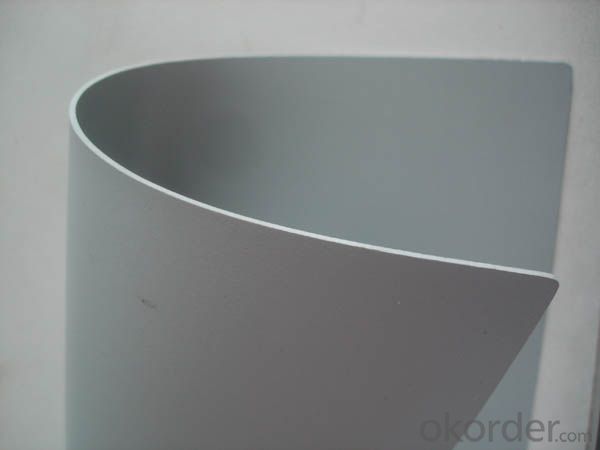
- Q: Can a waterproofing membrane be used in conjunction with roofing materials?
- Yes, a waterproofing membrane can be used in conjunction with roofing materials. In fact, it is commonly used to provide an additional layer of protection against water infiltration and to enhance the overall waterproofing capabilities of the roof.
- Q: Can a waterproofing membrane be used for above-grade applications?
- Yes, a waterproofing membrane can be used for above-grade applications. Waterproofing membranes are commonly used in construction to prevent water infiltration and damage to structures. While they are often used for below-grade applications such as basements and foundations, waterproofing membranes can also be used above-grade on surfaces such as roofs, decks, and exterior walls. In above-grade applications, waterproofing membranes act as a barrier against moisture, preventing water from seeping into the structure. They are designed to withstand prolonged exposure to the elements, including rain, snow, and UV rays. By effectively sealing the surface, a waterproofing membrane helps to protect the structure from water damage, mold growth, and deterioration. There are different types of waterproofing membranes available for above-grade applications, including liquid-applied membranes, sheet membranes, and self-adhering membranes. These membranes are often made from materials such as modified bitumen, polyurethane, or rubberized asphalt, which provide excellent waterproofing properties. When installing a waterproofing membrane above-grade, proper surface preparation is essential. The surface needs to be clean, dry, and free from any contaminants that could compromise the adhesion of the membrane. Additionally, it is important to follow the manufacturer's instructions and guidelines for application techniques and recommended thickness. In summary, a waterproofing membrane can be used for above-grade applications to effectively protect structures from water infiltration and damage. By choosing the appropriate type of membrane and following proper installation procedures, it is possible to create a durable and reliable waterproofing system for above-grade surfaces.
- Q: Can a waterproofing membrane be used on concrete?
- Concrete can indeed benefit from the use of a waterproofing membrane. In fact, it is a popular technique employed to shield concrete structures from the harmful effects of water and moisture. A waterproofing membrane is a slender layer of material that is carefully placed on the concrete surface, serving as a barrier against water and moisture. This membrane can be crafted from a variety of materials such as bitumen, rubberized asphalt, polyurethane, or acrylic. It is typically administered in either liquid or sheet form, effectively attaching itself to the surface and forming a continuous impermeable coating. This coating, in turn, prevents water from infiltrating the concrete, thereby thwarting the possibility of deterioration, cracks, and other types of damage. Waterproofing membranes are extensively employed in a wide range of concrete applications, including basements, foundations, roofs, and any other structures that are exposed to water or moisture.
- Q: How does a waterproofing membrane handle movement of a building due to settling or seismic activity?
- A waterproofing membrane is designed to handle movement of a building caused by settling or seismic activity by providing flexibility and elasticity. It can accommodate small shifts and vibrations without cracking or breaking, ensuring that the waterproof barrier remains intact. The membrane's ability to stretch and contract helps it to adapt to the movement of the structure, preventing water intrusion and maintaining its effectiveness in safeguarding the building against moisture damage.
- Q: Can a waterproofing membrane be used on precast zinc surfaces?
- Precast zinc surfaces can indeed benefit from the use of a waterproofing membrane. These membranes are specifically designed to safeguard various surface types against water infiltration, including concrete, metal, and zinc. By creating a protective barrier, these membranes effectively prevent water from permeating the surface. This is especially crucial for precast zinc surfaces that are prone to exposure to moisture or water. The application of a waterproofing membrane to such surfaces can effectively extend their lifespan and shield them against potential water-induced damage, such as corrosion or deterioration. Therefore, it is essential to carefully choose a waterproofing membrane that is compatible with zinc and meticulously adhere to the manufacturer's instructions regarding proper application and maintenance.
- Q: Can a waterproofing membrane be used for outdoor applications?
- Outdoor applications can indeed benefit from the use of a waterproofing membrane. Their primary purpose is to shield against water and moisture infiltration, making them well-suited for outdoor settings where exposure to rain, snow, and other weather elements is a concern. These membranes find extensive use in various outdoor areas, including roofs, balconies, decks, and foundations, as they effectively protect against water damage and ensure long-term durability. They form a reliable barrier that keeps water out while still allowing the structure to breathe, preventing the accumulation of moisture and potential problems like mold and rot. Ultimately, utilizing a waterproofing membrane for outdoor applications is a wise decision that enhances the structure's longevity and performance.
- Q: Can a waterproofing membrane be used on galvanized surfaces?
- Indeed, galvanized surfaces can benefit from the application of a waterproofing membrane. Typically employed to safeguard metal against corrosion, galvanized surfaces can experience even greater protective properties when a waterproofing membrane is utilized. By creating an additional layer of defense, the membrane effectively shields the galvanized surface from water infiltration, thereby averting potential rust or damage. However, it is crucial to ensure that the chosen waterproofing membrane is compatible with the galvanized surface and specifically designed for this particular application. Prior to implementation, it is advisable to seek guidance from the manufacturer or a professional in order to guarantee proper installation and compatibility when applying a waterproofing membrane to galvanized surfaces.
- Q: Can a waterproofing membrane be applied in cold weather or during winter months?
- Yes, a waterproofing membrane can be applied in cold weather or during winter months. However, it is important to follow the manufacturer's guidelines and use products specifically designed for cold weather applications. Cold weather may affect the curing time of the membrane, so it is recommended to take necessary precautions and allow sufficient time for proper curing to ensure the effectiveness of the waterproofing.
- Q: Are there any specific considerations for installing a waterproofing membrane in high-traffic areas?
- Yes, there are specific considerations for installing a waterproofing membrane in high-traffic areas. Firstly, the membrane should be durable and able to withstand heavy foot traffic without getting damaged. It should also have a non-slip surface to ensure safety and prevent accidents. Additionally, the membrane should be easy to clean and maintain to prevent dirt build-up and maintain its functionality.
- Q: How to use self-adhesive waterproofing membrane?
- 7) on the interface seal: the use of additional self-adhesive seal seal. When sealing the interface, first remove the diaphragm on the surface of the membrane overlap parts, and then paste the additional self-adhesive seal. If the overlap is contaminated, clean it first. (When the upper and lower layers between the use of lap, no self-adhesive seal, lap width of not less than 60mm) 8) Self-adhesive waterproofing membrane in the wall when the paving, the coil should be temporarily sealed at the mouth (available tape or thickened cement slurry seal), to prevent the wall of the head of the water too quickly lost. 9) node to strengthen the processing: node in the large surface after the completion of the construction of reinforced processing.
Send your message to us
Polyvinyl Chloride Plastic Waterproof Membrane
- Loading Port:
- China main port
- Payment Terms:
- TT OR LC
- Min Order Qty:
- 5000 m²
- Supply Capability:
- 100000 m²/month
OKorder Service Pledge
OKorder Financial Service
Similar products
Hot products
Hot Searches
Related keywords
